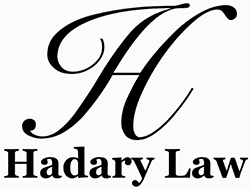Liens in the Residential Context
A lien is a method of securing the homeowner’s debt to another person or corporation. A lien enables the recovery of debt in case the homeowner fails to pay. The registration of a lien constitutes a significant force which in most cases will cause the homeowner to pay and settle the debt in an attempt to avoid enforcement proceedings. Enforcement proceedings can lead to the sale of the property in an attempt to recover the debt.
The Municipal Lien:
The Municipal Act grants municipal authorities the power to register a lien against title to a property in an attempt to recover unpaid property tax debts. The authority to register a property tax lien is automatic and is created without the formal registration of the lien. The registration is the perfection of the process and grant of public notice of this debt owed to the City. The automatic lien takes priority even over other secured debts registered in first position over the property. A mortgagee that has perfected its secured loan (mortgage) by registering a charge over the property will yield to the right of the City to recover unpaid property tax before recovering its mortgage debt.
Outstanding amounts and arrears owed to the City for the provision of public utility such as water, also forms a part of the City’s automatic lien. This poses a challenge upon closing, as the City will usually read water meters once every few months, which may not provide an accurate amount of water debt at the time of title transfer. The solution is to purchase a water certificate, or rely on the purchase of title insurance to cover over any undiscovered debt while the seller is being pursued for its payment.
The value of a tax certificate is indisputable. Although costly at times, it could save the purchaser the agony of filing a claim with title insurance while awaiting the recovery of funds.
There other tax formed liens which can affect title of an innocent purchaser. One of the more known instances is the sale of a property by a non-resident seller. When a non-resident seller disposes of property in Canada, a clearance certificate must be attained from the government confirming his tax liability. A non-resident seller can apply for such a certificate of compliance before the closing date of his sale. Otherwise, a holdback mechanism must be arranged between lawyers, whereby the seller’s lawyer will holdback 25% of the stated purchase price until such time when a certificate of compliance is attained. If the non-resident seller does not make adequate arrangements in this respect, the innocent purchaser may be faced with an automatic lien formed against his property for the payment of the seller’s tax liability pursuant to section 116 of the Income Tax Act.
Land Transfer Tax is another form of tax which gives rise to an automatic lien against the land. Land Transfer Tax is a tax calculated as a percentage multiplied by the value of the transferred property. Failure to pay the adequate tax amount on the purchase of a real estate property will give rise to a lien against the subject property limited to the amount of unpaid tax and related payments. This matter can into play when a tax exemption is claimed but is later found to be unsubstantiated. For example, the transfer of real estate property would be exempt from land transfer tax when conveyed from trustee to beneficial owner. However, such conveyance can be challenged and reassessed by the Ministry of Finance if it is later found that the facts surrounding such conveyance do not support the exemption claimed. Other exemptions that are easier to prove would be the transfer of title from one spouse to another for “natural love and affection”, or the transfer pursuant to a will or simply by way of a gift.
Writs and judgements
A creditor who can establish his case in court and receive a court judgement may attempt to enforce such judgement against the debtor by registering the writ of execution (the judgement) with the local Sheriff’s office. If registered where the debtor owns real estate property, the writ forms a lien against the property. If left unattended, the writ could be used by the Sheriff to seize and sell the property. A writ of execution has practical implication on the day-to-day dealing with the property. As the writ forms a lien against the land, even when unregistered against title, it takes priority to any secured debt registered against the land after the writ was issued. The owner cannot use his property as collateral to secure a loan, e.g. a mortgage, when the lien takes priority.
The lien will take priority to any secured debt registered on title even if the debtor did not own real estate property at the time of issuance. That is, if the debtor purchases real estate property after the writ was filed, it will bind that property until the writ is cleared. A purchaser who acquires real estate property subject to an existing writ accepts the lien formed by that writ. A purchaser who accepts title to a property subject to a writ without his knowledge is still bound to the lien created by that writ.
Note that the registration of writs is limited to the jurisdiction in which it was registered. Therefore, a writ registered in Peel region will not affect a property located in the City of Toronto.
